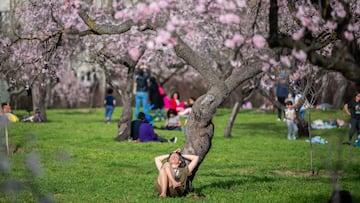The ‘Empress’ tree, which grows over 6 feet per year, will provide you with the best shade in the summer of 2026 if you manage to plant it
Here’s everything you need to know about the ‘Empress’ tree, including the dangers.


Imagine planting a tree today and having shade under its canopy in just a couple of summers — it sounds like a dream. However, it’s not science fiction: the Paulownia, also known as the “princess tree” or “empress tree,” is a species capable of growing at a surprising rate and becoming a lush green refuge in a very short time.
Native to Asia — especially China — it can reach growth of over 6 feet per year in optimal conditions and easily surpass 50 feet in height in a few years. Its huge heart-shaped leaves provide dense, cooling shade, which has made it a sought-after species among gardeners, farmers, and reforestation projects.
Paulownia is a very majestic tree. pic.twitter.com/Cbi5glg2OX
— Build more soil ☦ (@16forbs) October 1, 2025
An ally against climate change
Among the main advantages of this tree is its capacity to absorb ten times more CO₂ than other common species — a benefit that positions it as an ally in the fight against global warming. Its deep roots also help to improve soil quality, and its use has expanded in the recovery of degraded land.
Moreover, the Paulownia is not new to Eastern tradition. In China and Japan it has been cultivated for centuries for its lightweight, durable wood and for its lilac flowers that fragrance the spring. In Japan, there even exists a custom of planting one when a girl is born, so that years later her dowry can include furniture made from its wood.
But not everything is beneficial. Its rapid growth and ease of adaptation also make it a risk. In countries like Australia, New Zealand, and several U.S. states, its cultivation is restricted or prohibited because of its invasive character. There, it displaces native species, competes for resources, and threatens biodiversity.
Beyond its ornamental and ecological appeal, the timber industry values Paulownia for being extremely light, strong, and insulating. It is used in making musical instruments, high-quality furniture, and even surfboards, which explains its popularity in controlled plantations in Europe and Latin America.
Is it advisable to plant it in your garden?
Its advantages are tempting: in less than two years it may provide a lush green canopy. However, it’s not suitable for every garden: it needs a lot of space and can become problematic if it spreads uncontrolled.
In some countries, like Spain for example, the species appears on a preliminary “black list” of exotic invasive species drawn up by the government. This reflects concern about its ecological impact, although its sale or cultivation is not yet legally prohibited.
The recommendation is clear: before planting a Paulownia, it’s wise to check local regulations and evaluate whether it’s really the right choice. Its true nature lies between fascination and danger — a tree capable of growing faster than most, but also one that can put ecosystems at risk if it spreads uncontrolled.
Evening View of Rain in Paulownia Field at Akasaka, from One Hundred Famous Views of Edo, by Utagawa Hiroshige II, 1859 pic.twitter.com/GHgDnuV8T8
— Masterpieces of Japan (@JapanTraCul) September 11, 2025
Related stories
This article is taken from Cadena SER.
Get your game on! Whether you’re into NFL touchdowns, NBA buzzer-beaters, world-class soccer goals, or MLB home runs, our app has it all. Dive into live coverage, expert insights, breaking news, exclusive videos, and more – plus, stay updated on the latest in current affairs and entertainment. Download now for all-access coverage, right at your fingertips – anytime, anywhere.


Complete your personal details to comment